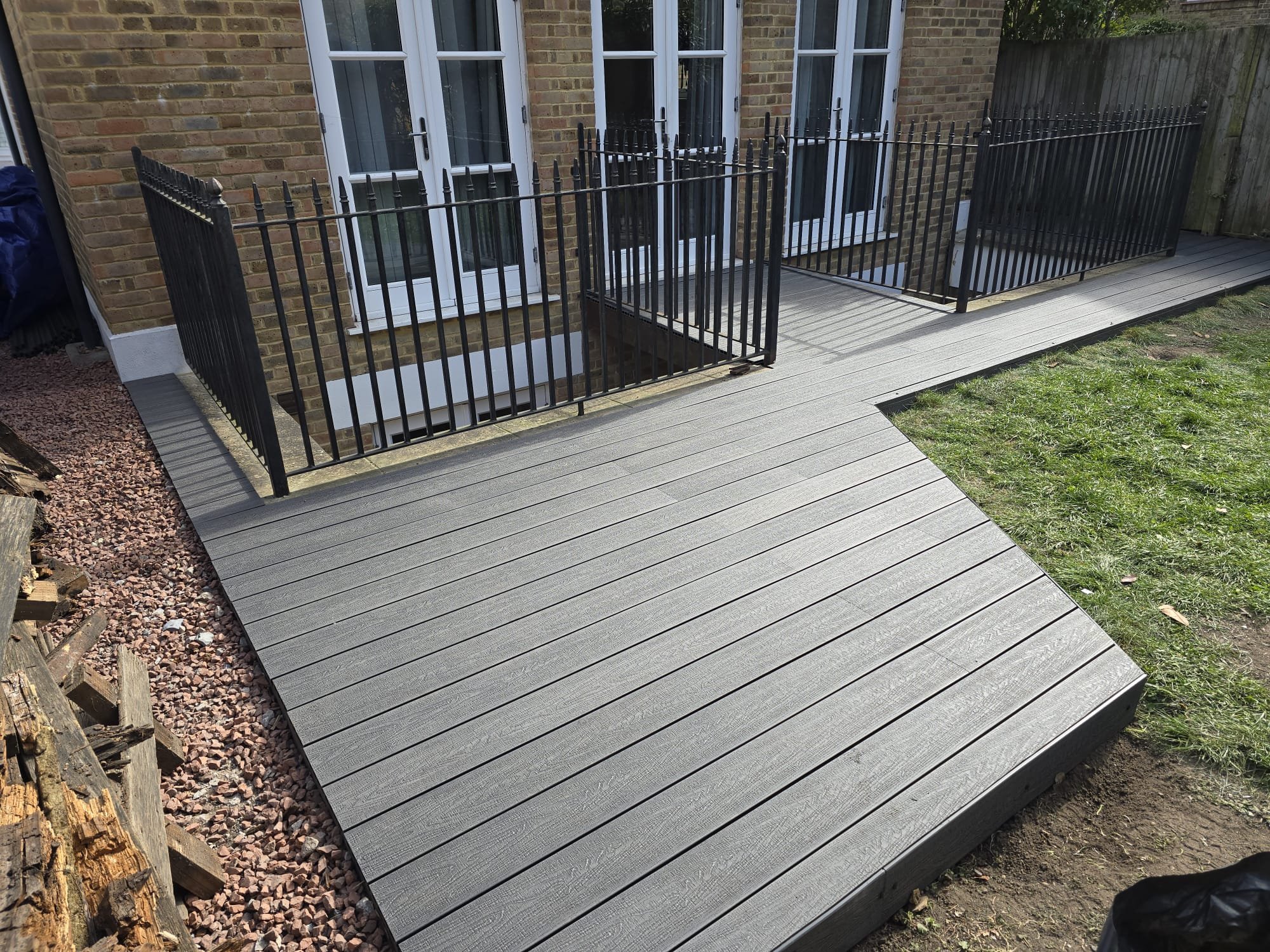Time for outdoor entertaining?
Summer is finally just around the corner and with that brings the prospect of lazy al fresco lunches and bbqs with friends. But does your garden pass muster? Is your exterior socialising space shipshape and ready? One quick win to get your garden summer ready is to install decking. It is relatively quick to fit, does a great job at masking uneven ground and looks beautiful with a huge ranges of finishes to match all tastes. One question we are often asked though, is which kind of decking is best – composite or wooden?
Each has its pros and cons in terms of cost, maintenance, durability, and appearance. Here are a few considerations to help you decide:
1. Appearance
Wooden Decking
Wood provides a natural, classic look that many homeowners love. Options like cedar, redwood, and pressure-treated pine bring warmth and authenticity to outdoor spaces. Over time, wood can age beautifully—but it can also weather, fade, or crack without proper maintenance.
Composite Decking
Composite decking is made from a mix of wood fibres and plastic. While early versions looked artificial, modern composites often mimic wood grain convincingly. The appearance stays consistent over time, without the fading or staining that affects wood.
Verdict:
Go for wood if you love natural beauty and are okay with a little upkeep. Choose composite for long-term consistency and a polished look.
2. Maintenance
Wooden Decking
Requires regular staining, sealing, and sometimes sanding. Without proper care, wood can splinter, rot, or attract pests.
Composite Decking
Low-maintenance. Occasional cleaning with soap and water or an occasional jet wash keeps it looking fresh. No need for staining or sealing.
Verdict:
Composite is the clear winner for those who prefer a low-maintenance lifestyle.
3. Durability
Wooden Decking
While pressure-treated wood can last 10–15 years with proper care, it's still susceptible to rot, mould, and insects.
Composite Decking
Highly durable—resistant to fading, staining, scratching, and mould. Many products come with 25–50 year warranties.
Verdict:
Composite offers better long-term durability, especially in harsh climates.
4. Cost
Wooden Decking
Cheaper upfront. Pressure-treated wood is the most affordable option, but high-end woods (like redwood) can get pricey.
Composite Decking
Higher initial cost but lower lifetime maintenance expenses.
Verdict:
Wood is better for tighter budgets, but composite may offer better value over time.
5. Sustainability
Wooden Decking
Renewable and biodegradable, especially if sourced from responsibly managed forests.
Composite Decking
Often made from recycled materials (plastic and wood). However, not biodegradable and more difficult to dispose of.
Verdict:
A toss-up—wood is biodegradable, but composite supports recycling efforts. Look for FSC-certified wood or eco-conscious composite brands.
Ultimately, the choice comes down to your priorities. If you love the look of real wood, timber is your friend. If you prefer convenience, longevity and consistent aesthetics, composite is worth the investment.


